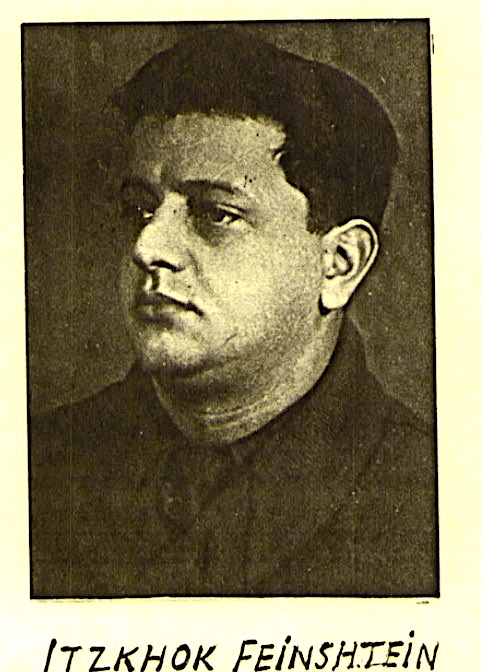by Dr. Joanna Sliwa
Stasė Sindikaitytė was about 15 years old when the German army occupied her town of Stakiai, about 40 miles north of Kaunas, Lithuania, in June 1941. She lived with her father, Benediktas Sindikaitis, and her paternal grandmother Kazimiera Mozurkienė, in a house on a hill, near the rivers Mituva and Snietala.
Soon, the Jewish population of the town was in danger. Throughout Lithuania, massacres of Jews took place between July and November 1941. About 80 percent of all Jews had been murdered during this period. Members of local Lithuanian police battalions participated in the round-up and killing of their Jewish neighbors. At the beginning of August 1941, the authorities ordered the local farmers in Stakiai to dig a pit on the Mituva bank. That is where the Jewish population of Stakiai of about 30 people were murdered and buried. Five Jews survived the massacre: brothers Hirsch and Itzkhok Feinstein (Feinshtein), and Moshe Vinnik and his sisters, Jona and Sara. The group fled to the forest. There they were joined by other Jews who managed to escape murder in nearby localities.

Benediktas helped the Jews by providing them with the little food that he had and with shelter in his barn during cold nights. The scarcity of food pushed the Jews to steal from neighboring farms. This led to a search at the Sindikaitises’ farm. No Jews were found, although all of them were hiding on the property. They understood the predicament of their aid giver. The Lithuanian policemen threatened the Sindikaitises with a return visit. They arrested Benediktas a few days after the search and imprisoned him in Raseiniai. He managed to escape from the prison.
The Jews who were assisted by the Sindikaitises fled to the forest and established a camp for about 60 people. Among them was 17-year-old Frida Fridmanaite from the town of Skaudvilė, about 30 miles north of Stakiai. Frida (later Freda Karpul) recorded an oral history for the USC Shoah Foundation Visual History Archive in 1995 and wrote a memoir in which she described her persecution.
Freda’s father, together with many other Jewish men from her town, were killed in a forest near the town in summer 1941. Freda, her mother Chaya, and two sisters, Luba and Tsipporah, together with other Jewish women and children from the town were then taken to a labor camp in Batakiai. Several women banded together to escape from the camp. This way they managed to avoid the mass killing of the women in the camp.
Once outside the camp, the women escapees split. Freda, her sisters, and mother remained together for some time, until Freda’s older sister Luba separated from the family to hide shelter elsewhere. Freda, Tsipporah, and their mother mostly hid in the forest. They also approached Lithuanians whom they had known from before the war. Many farmers hid them in barns, offering ad hoc or temporary assistance only because they feared the German authorities, and, especially, the Lithuanian police. A search by Lithuanian police, most likely as a result of denunciation, led to the discovery of Freda’s and her family’s hiding place. The policemen killed Freda’s mother and sister. She managed to escape. Freda went from farm to farm to people her family had known, staying in each place for a short time. She reunited with her older sister at one of the farms. Eventually, Freda and Luba entered the Kaunas ghetto, as they had nowhere to go to, and Freda was very sick.
Through a Lithuanian girl, Freda was connected to Benediktas Sindikaitis who, she learned, was already helping Jews. He offered to take in Freda, warning her that the Kaunas ghetto would be liquidated. Freda received confirmation from the Lithuanian girl that the man’s offer was sincere. Once Freda reached his house, she learned that Benediktas had been hiding and helping Jews for a few years. While Benediktas was unable to keep Freda at home, he did find a place for her to hide with the other Jews. Stasė and Freda became friends and often went on missions together to bring food for the Jews in the forest.

Photo: Rescuedchild.it
Freda promised her relatives in the ghetto that she would try to bring them to safety as well. So, Freda, took the risk to travel back to Kaunas and return to the ghetto. She arrived during a German raid at the end of October 1942 when the German authorities selected about 10,000 Jews, half of whom children, and murdered them in a mass shooting action in the IX Fort. Freda managed to find a hiding place inside the ghetto. Her relatives for whom she returned decided not to leave the ghetto. Freda sneaked out of the ghetto and went back to Stakiai by herself.
She hid with other Jews in the forest. This was a dangerous place to be because of the presence of German soldiers in the area. One day, the camp was surrounded by German forces and nearly all the Jews were killed. The women hid in bunkers. Freda managed to escape but suffered from injuries after being shot. She reunited with another woman from the camp and the two remained together until liberation.

Anticipating the Soviet advance, the German soldiers ordered the residents of Stakiai to evacuate. The Sindikaitises arrived in Jubarkas, near the border with Poland. Among the evacuees were Stakiai Lithuanian policemen who informed on Benediktas about the help that he had extended to Jews. Benediktas was arrested. A week before liberation, on September 29, 1944, members of German forces shot Benediktas because he was accused of helping Jews.
Freda lived in Kaunas with her husband, their daughter and the daughter’s family until 1980, when all of them immigrated to the United States. Freda and her rescuer Stasė remained friends and exchanged letters for many years. Freda’s sister Luba settled in Israel.
